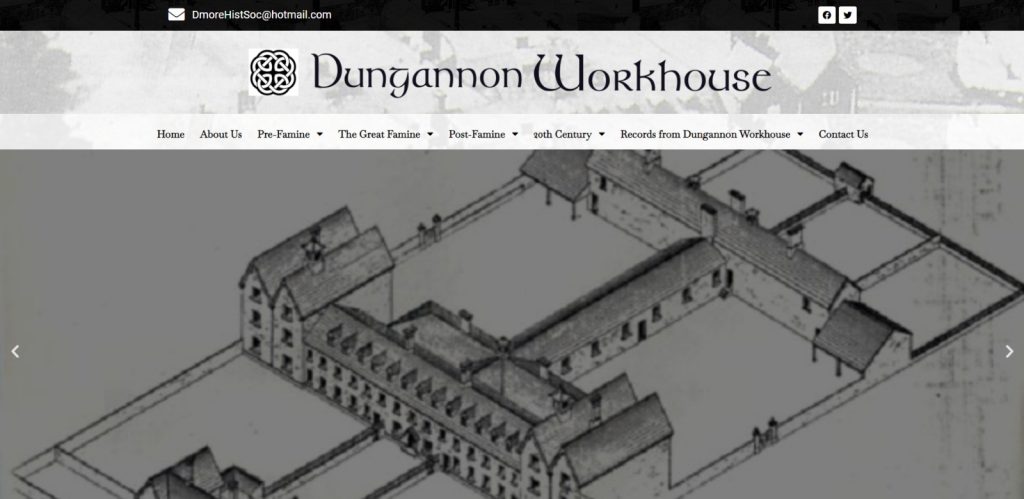About Dungannon Workhouse:
Almost 4,000 people are buried in the area known as the ‘Barley Field’, which lies to the rear of the former Dungannon Workhouse. The vast majority of these were buried there during the Great Famine, when in 1847 and 1849 cholera and typhus stalked the walls of the workhouse.In the register of deaths for Dungannon workhouse, 1842-1900, more than 180 different causes of death are listed for those who were termed ‘inmates’-residents of the workhouse. Many of these illnesses are today curable and indeed non-life threatening and included bronchitis, diarrhoea and influenza. The deaths ranged in age from little Mary Hughes of Minterburn who only survived an hour after birth in 1887 to 108-year-old Anne Oberry of Dungannon who died there in 1891. These are just two of the many ‘human’ stories which the Dungannon Workhouse project aims to tell by adding names and details to the lives of thousands of people who passed through its doors. The Dungannon Workhouse was opened in May 1842 and its first residents arrived on 23rd June the same year. The building was built to serve up to 800 people but during the period of the Great Famine (1847-1850) it catered for twice that number. The first death was recorded on 12th August 1842 and between then and the middle of the 20th century almost 4,000 people were buried there.


